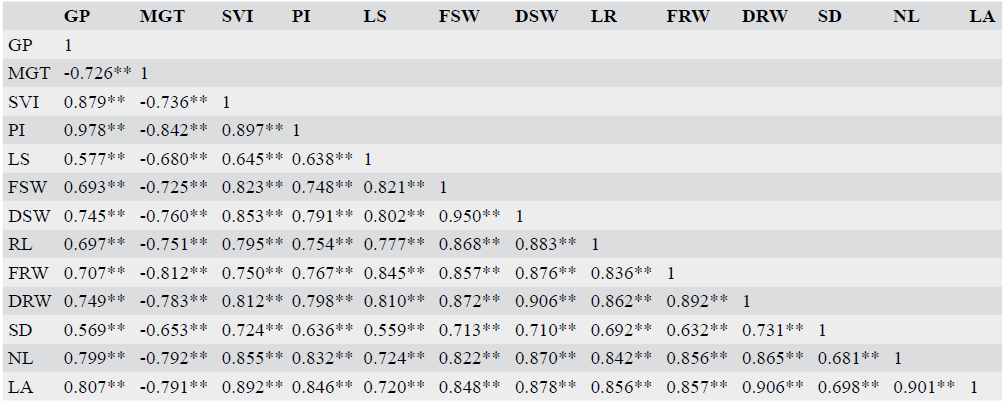Melatonin-Mediated Induction of Salt Tolerance in Maize at Germination and Seedling Stage
Melatonin-Mediated Induction of Salt Tolerance in Maize at Germination and Seedling Stage
Syed Saqlain Hussain1*, Muhammad Rasheed2, Zammurad Iqbal Ahmed2, Ghulam Jilani3, Muhammad Irfan4, Muhammad Kashif Aziz5, Fiaz Hussain1, Muhammad Akhlaq Mudassar1 and Zuhair Hasnain2
Schematic diagram of the first experiment showing priming of seed with different melatonin concentrations including hydropriming. Each beakers contain requisite melatonin solution and fifteen (15) seeds out of sixty sterilized seeds (60) from each genotype and connected with air pump (only beakers). Each petri dish contains five (5) primed seed out of fifteen (15) seeds from each beaker and replicated thrice.
Variable PCA.
Bi-plot showing the dispersion of different treatments combinations.
Pearson’s correlations coefficients for different parameters as affected by melatonin priming and maize genotypes under salt stress conditions.











